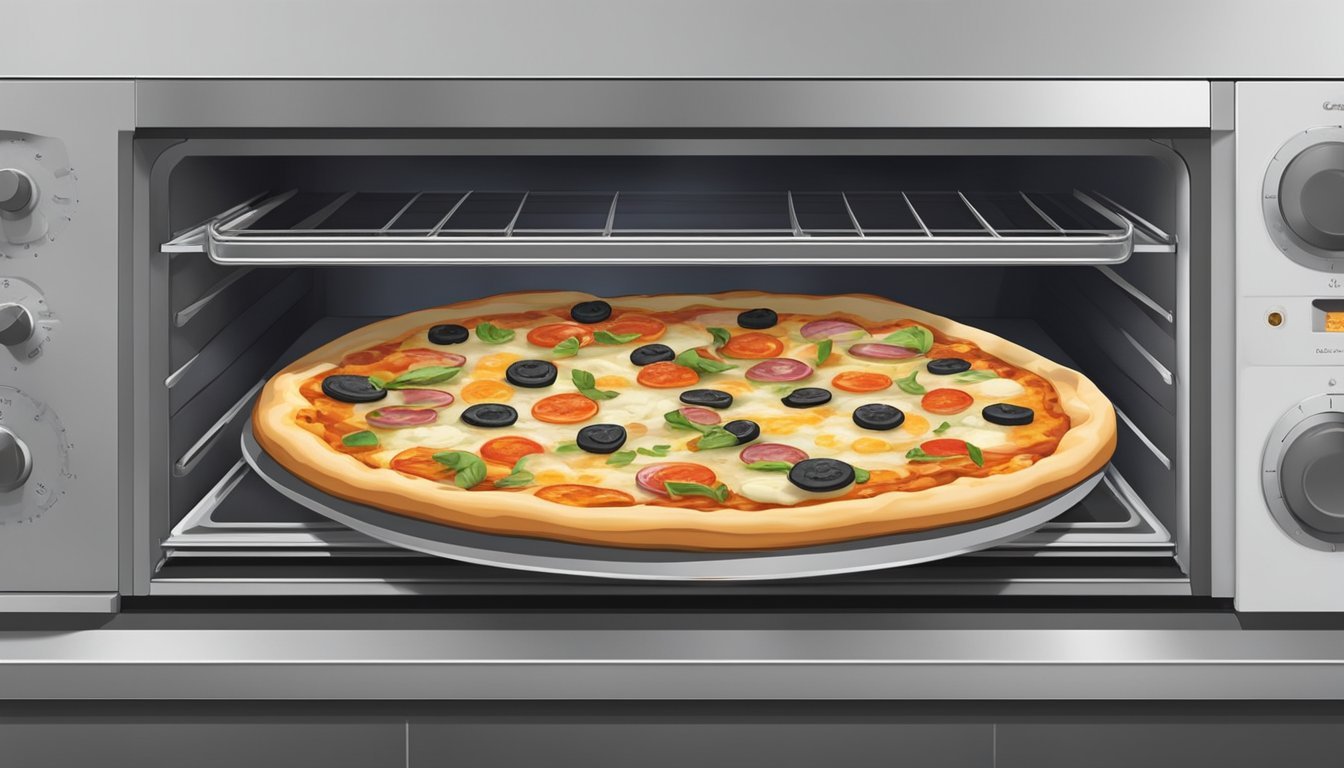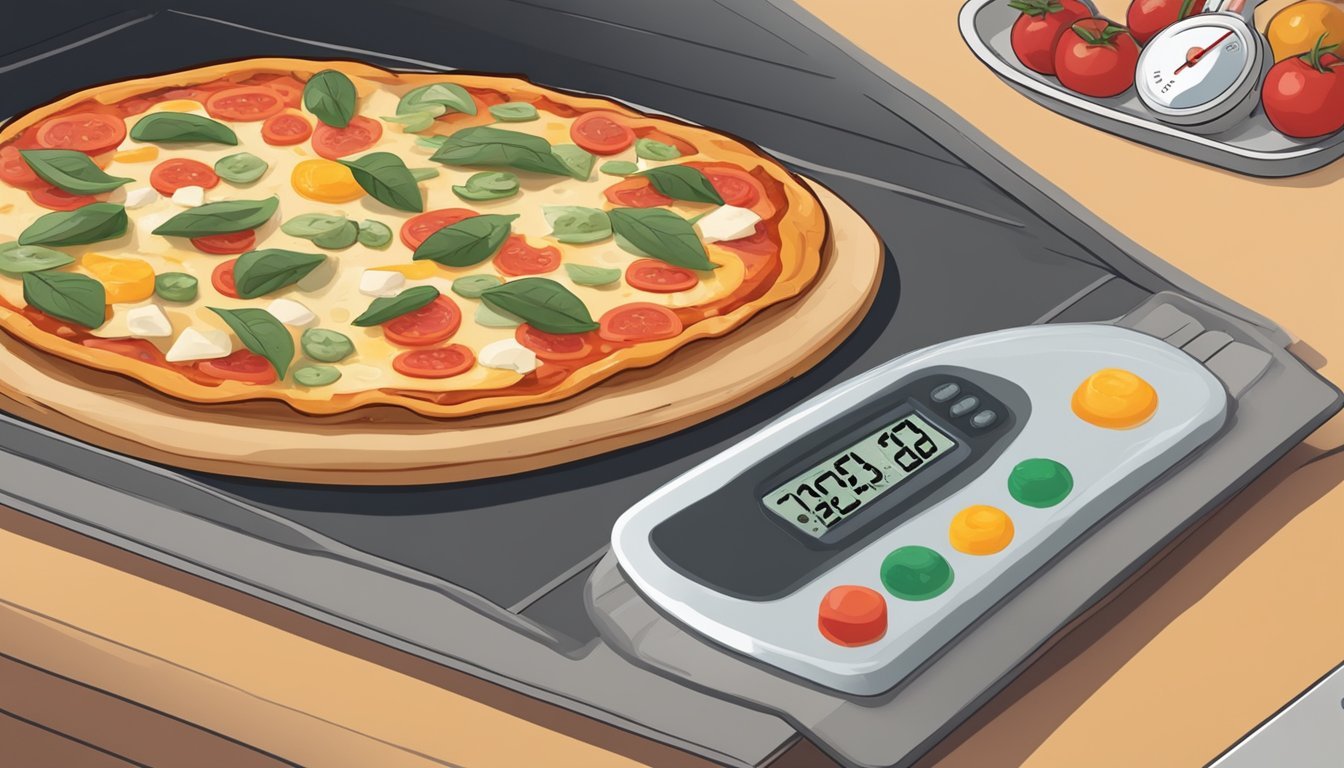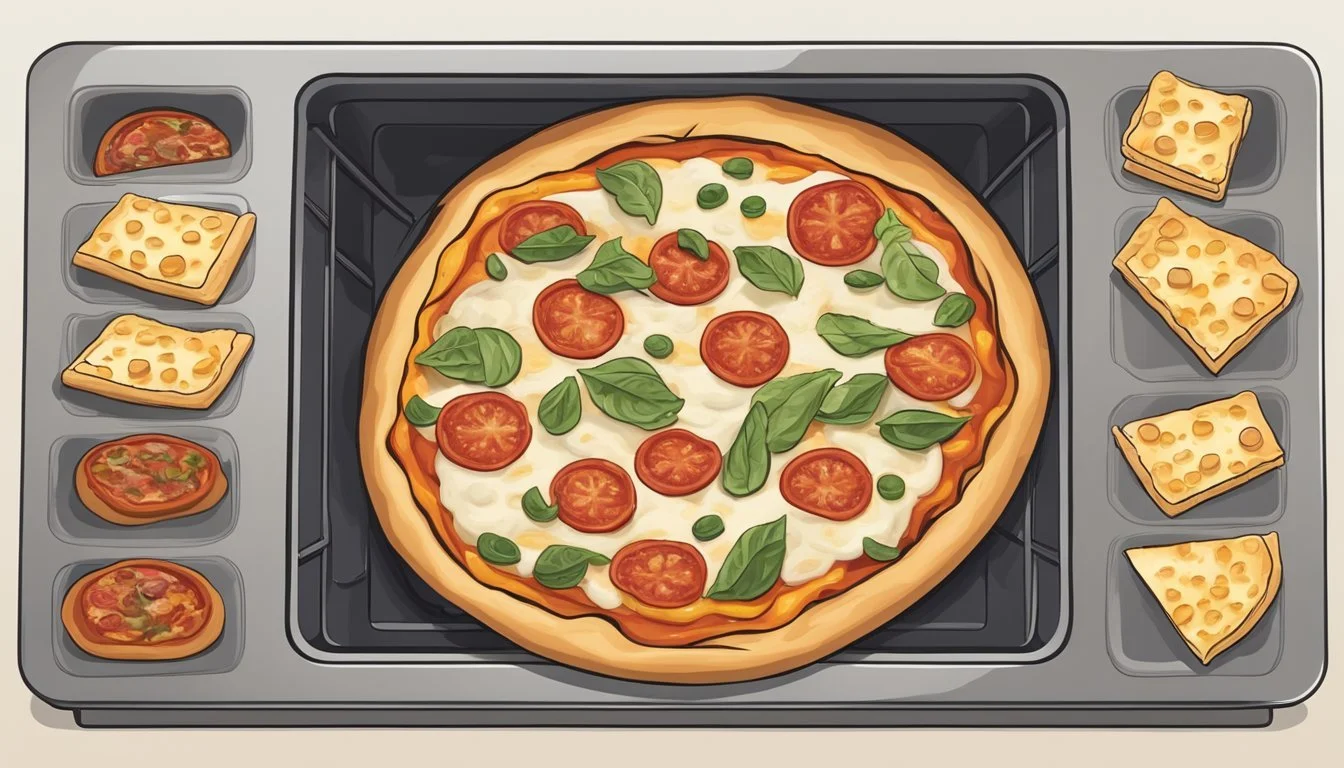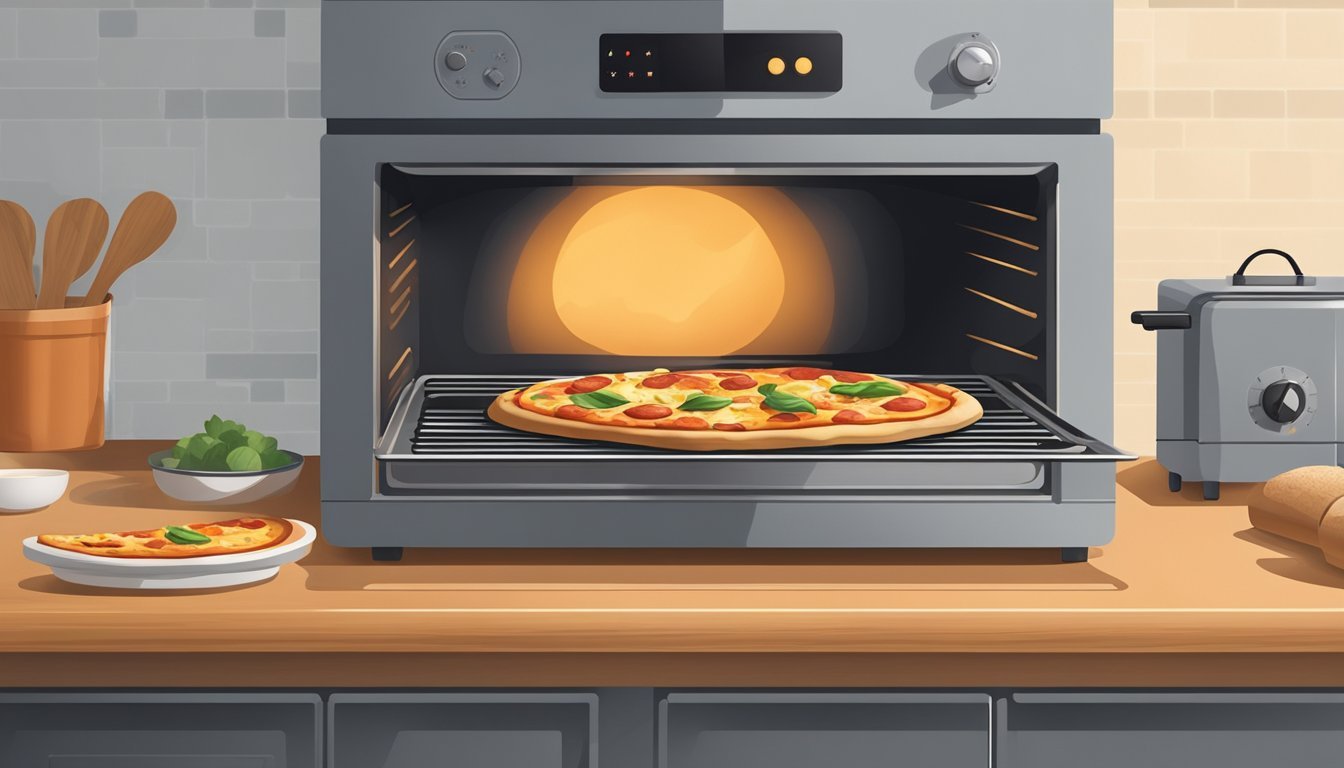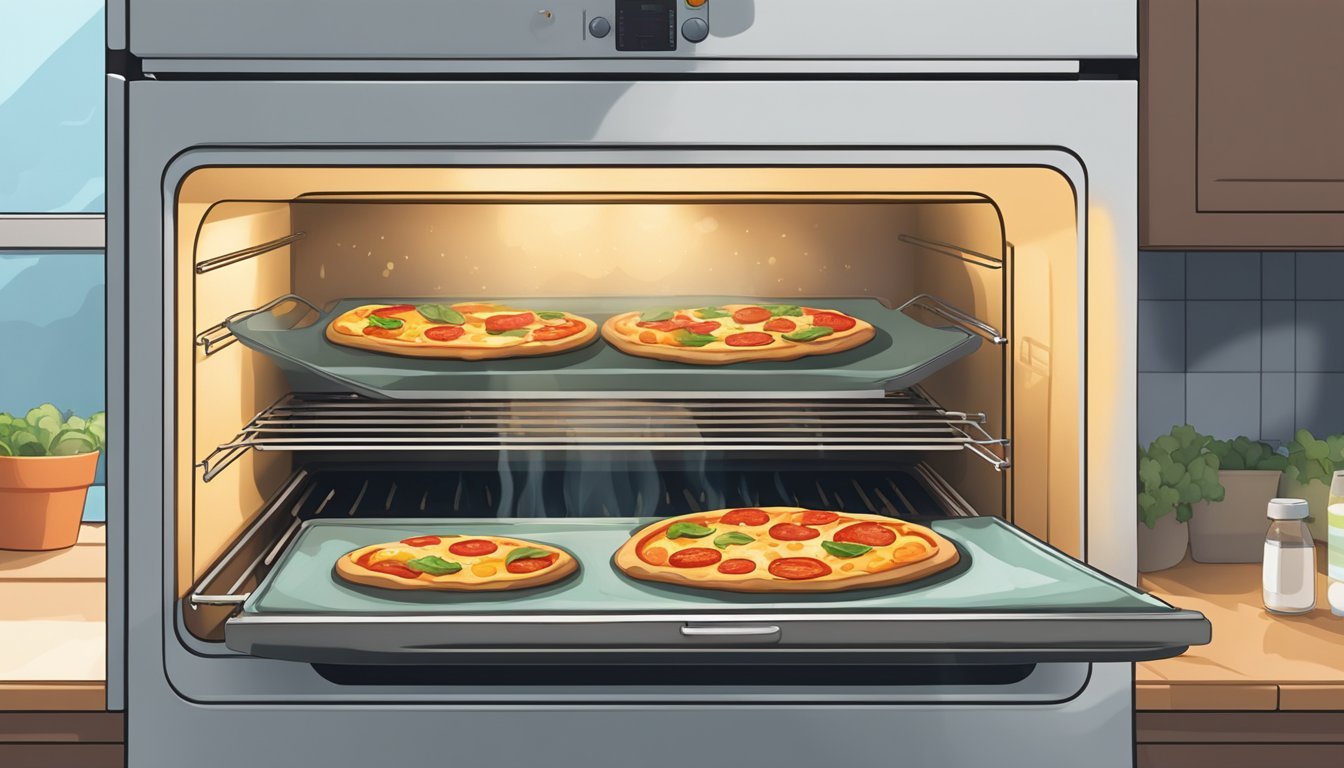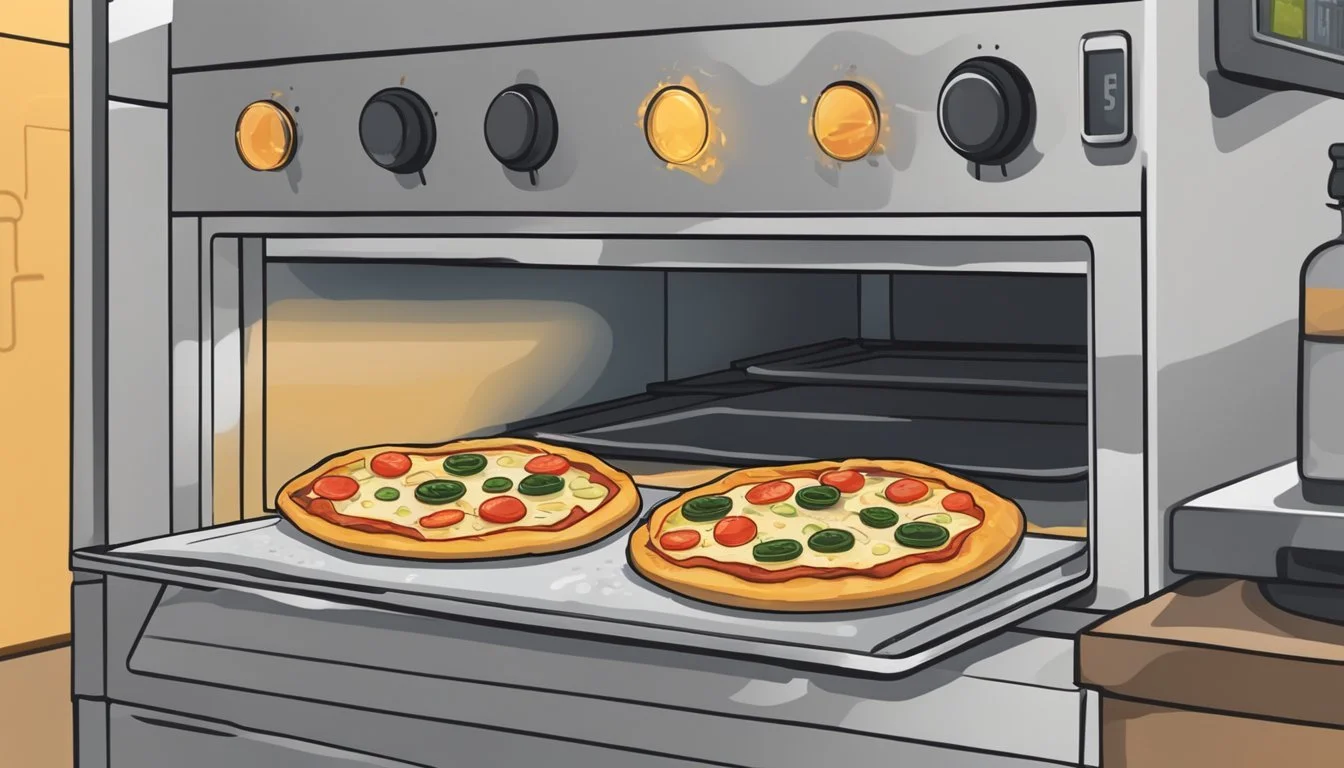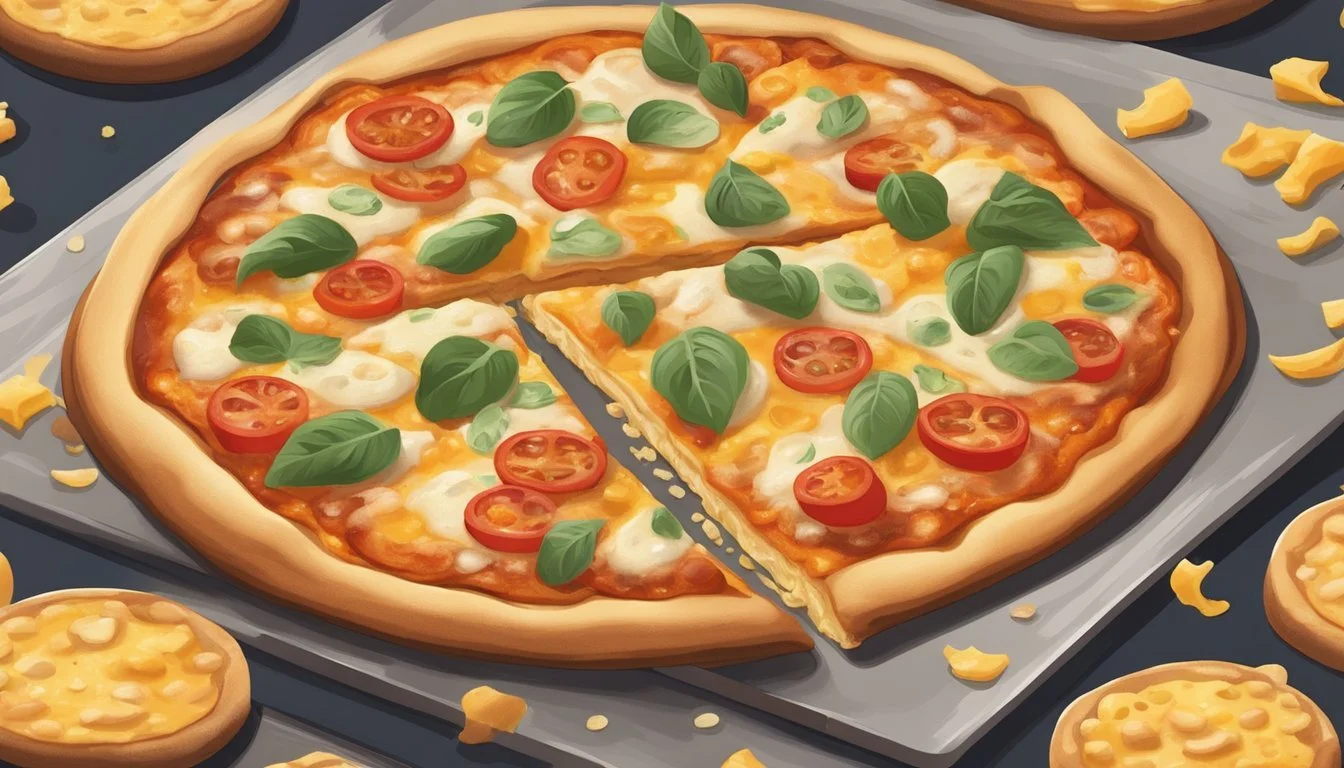Best Way to Reheat a Flatbread Pizza
Keeping Toppings Intact and Delicious
Reheating leftover pizza (What wine goes well with pizza?) can often result in a soggy or burnt disappointment, especially with flatbread pizzas that have less structural integrity than their thicker crust counterparts. To maintain the quality of a flatbread pizza, it is crucial to employ a reheating method that preserves the crispy crust while keeping the toppings intact and flavorful. Flatbread pizzas, with their thin crust and delicate balance of toppings, require a careful approach when being reheated to ensure that the final product is as enjoyable as when it was first baked.
The best way to reheat a flatbread pizza involves a few steps that are geared towards achieving a balance between a crispy crust and perfectly warmed toppings. The oven is often the preferred method for reheating as it provides even heating and can restore the fresh taste and texture of the pizza. Preheating the oven, using the correct temperature, and monitoring the reheating process are key factors to avoid overcooking or burning the pizza. Attention to these details will help to maintain the overall quality of leftover flatbread pizza, making it almost indistinguishable from when it was originally served.
Understanding Flatbread Pizza
Flatbread pizza distinguishes itself with a thin, crisp base that serves as a vessel for a variety of toppings. Since it lacks the thicker dough rim often found in traditional pizzas, flatbread provides a crispy texture that enhances the overall flavor profile. Flatbread pizzas are generally baked at a high temperature for a short period, which contributes to their distinctive crispness.
When reheating leftovers, preserving the quality of the flatbread is essential. One must aim to maintain its crisp texture while ensuring that the toppings are heated through without losing their integrity. The key is to apply a method that can warm the pizza effectively without making the base soggy or drying out the toppings.
Key Considerations:
Texture: The goal is to retain the flatbread's crispness during reheating.
Flavor: Proper reheating should not compromise the pizza's flavor.
Leftovers: Approach reheating as a way to revitalize the pizza, not just warm it up.
Due to its thin nature, flatbread pizza cools down quickly, which can actually be a benefit when handling leftovers as it reduces the risk of bacterial growth. However, careful storage is crucial to keep the texture and flavor intact. When stored and reheated properly, flatbread pizza can provide a dining experience comparable to when it was freshly made.
Preparation for Reheating
Proper preparation can ensure the reheating process of a flatbread pizza maintains its texture and flavor. Essential steps help protect toppings and achieve a crispy crust.
Assessing Pizza Condition
Before reheating flatbread pizza, one should evaluate the pizza’s condition. If it’s been refrigerated, one should ensure that the pizza has no excess moisture on its surface, as this can make the crust soggy. The cheese and toppings should be well-attached, but if they're loose, they might need to be secured or rearranged to prevent them from sliding off during the reheating process.
Gathering Necessary Equipment
To reheat the pizza while preserving its integrity, one must gather the right equipment. A list of common kitchen items that are suitable includes:
Oven: preheat to the recommended temperature, usually around 350°F (175°C).
Toaster Oven: ideal for single servings or small slices, with a similar temperature setting as the oven.
Skillet: a cast iron or nonstick skillet can be used on the stovetop to reheat pizza effectively.
Baking Sheet: one may use a baking sheet, preferably a rimmed one, to support the pizza in the oven.
Aluminum Foil: this can be utilized to wrap the pizza to retain moisture or placed under the pizza to make cleanup easier.
Air Fryer: although not common for flatbread, an air fryer can be set to a low temperature to reheat slices without drying them out.
Before turning on any appliance, one should ensure that aluminum foil or a proper nonstick surface is ready to use for easy pizza transfer and to keep toppings in place.
Reheating in the Oven
When reheating flatbread pizza in the oven, attention to detail can maintain the quality of the crust and toppings. Following the specific steps of preheating, rack placement, temperature control, and observation ensures the pizza is evenly reheated without losing its original texture and flavor.
Preheating the Oven
Preheating the oven is crucial to avoid a soggy crust. The oven should be heated to 275 degrees Fahrenheit. This lower temperature helps in reheating the pizza thoroughly without burning the crust or toppings.
Using the Lowest Rack
Position the baking tray on the lowest rack of the oven. This promotes a crispier crust as the heat is more direct and intense at the bottom, which is preferable for achieving a crispy base while keeping the cheese and toppings intact.
Baking Tray: Place the flatbread pizza on a baking tray for optimal heat distribution.
Timing and Temperature Control
Reheating time may vary based on the thickness of the crust and the number of leftover slices. However, an average time of 5 to 7 minutes is often enough. Constantly monitor the pizza to prevent overheating which can cause the cheese to burn and toppings to dry out.
275 Degrees: Maintain this moderate temperature for even reheating.
Pizza in the Oven: It should be observed, not left unattended.
Monitoring for Even Reheating
Keep an eye on the pizza throughout the reheating process. A cold oven can create uneven temperatures leading to inconsistent reheating. By monitoring, adjustments can be made if certain areas are reheating too quickly or slowly.
Leftover Slices: Rotate them if necessary to ensure even reheating.
Cheese and Toppings: Watch for their texture to ensure they're heated through but not overdone.
Reheating on the Stovetop
Reheating a flatbread pizza on the stovetop offers precision in heat management and can provide a palatable texture to the crust while keeping the toppings intact. By controlling the elements of heat and moisture, one can arrive at a close approximation of the flatbread's original state.
Choosing the Right Pan
The selection of the pan is a critical first step, as it affects the heat distribution and the final outcome. A cast-iron skillet is often regarded as the winner for its excellent heat retention and even cooking. However, a nonstick pan can also be effective, particularly if one is concerned about the delicate toppings sticking to the pan.
Using Low Heat Source
To avoid scorching the flatbread or making the toppings rubbery, one should use a low heat source. This gentle reheating allows starch molecules within the bread to become tender without drying out or becoming too crisp. Placing the flatbread in the pan once it's preheated ensures it warms up evenly.
Covering with a Lid
Covering the flatbread with a lid is essential in creating a steamy environment that prevents moisture loss. The lid traps steam, effectively melting cheese and reheating toppings without dehydrating them. The moisture also helps to reheat the flatbread so it's pleasantly tender and not dry. Use a lid that fits well to ensure no steam escapes, and thereby maintain an even distribution of moist heat.
Reheating in the Microwave
Reheating a flatbread pizza in the microwave can be quick and convenient. The goal is to achieve a warm slice with melty cheese without ending up with a soggy or rubbery crust.
Using Microwave-Safe Equipment
One should utilize microwave-safe plates or containers to reheat flatbread pizza. Avoid using metal or foil in the microwave, as these can spark and cause a fire. Instead, opt for a microwave-safe plate or a paper towel beneath the pizza to absorb excess moisture.
Adding a Water Source for Moisture
Placing a cup of water alongside the flatbread in the microwave can help to produce steam. This steam assists in evenly distributing heat and keeping the cheese melty without drying out the toppings. By introducing a moist environment, one lessens the risk of the flatbread becoming too chewy or rubbery.
Adjusting the Reheating Duration
Flatbread pizzas are best reheated in short intervals to avoid overheating. A good starting point is heating the flatbread for 30 seconds, checking the temperature, then continuing in 15-second bursts if needed. Keeping a close eye on the cheese is crucial; it should start to get melty but stop reheating before it turns oily or rubbery.
Reheating with Alternative Methods
When one does not have access to a conventional oven or prefers a quicker method, a toaster oven or an air fryer can be excellent alternatives for reheating flatbread pizza while maintaining a crispy crust and warm toppings.
Toaster Oven Technique
A toaster oven heats up more quickly than a conventional oven, making it a convenient choice for reheating leftover pizza. To prevent the toppings from falling off and to ensure the crust regains its crispiness, one should:
Preheat the toaster oven to 350°F (175°C).
Arrange the pizza on a toaster oven-safe tray or foil.
Heat the pizza for about 5 to 10 minutes, monitoring it to ensure the cheese is melted and the crust achieves a crispy texture.
This technique helps retain the texture and flavor of the pizza without the wait time associated with a larger oven.
Air Fryer Option
An air fryer offers a unique method to reheat flatbread pizza by circulating hot air around the food. It can quickly crisp the crust and warm the toppings without making them soggy. For individuals using an air fryer:
Preheat the air fryer to about 320°F (160°C).
Place the pizza slices in the air fryer basket, ensuring they do not overlap.
Heat for about 3 to 4 minutes, checking intermittently.
This method is especially effective for achieving a crispy crust and even heating of the toppings. It's a fast, efficient way to bring the freshness back to leftover pizza.
Troubleshooting Common Issues
Reheating flatbread pizza can sometimes result in less-than-ideal texture and flavor if not done carefully. The following subsections address common reheating issues to ensure a crispy crust, perfectly melted cheese, and well-preserved toppings.
Avoiding Soggy Crust
To prevent a soggy crust, one should preheat the oven thoroughly before placing the flatbread pizza inside. Utilizing a baking sheet or a pizza stone can provide a crispier base by evenly distributing heat. It's also beneficial to avoid wrapping the pizza in foil, as this can trap steam and moisture, leading to a soft crust.
Preventing Toppings from Burning
Monitor the pizza closely while it's reheating to prevent the toppings from burning. If the oven is too hot or the pizza is left in for too long, toppings might char. To protect them, reheat at a moderate temperature—typically around 350°F (175°C)—and use the upper-middle rack to provide a buffer from the heat element.
Dealing with Cheese and Toppings Separation
When cheese and toppings separate from the crust, the pizza loses its fresh pizza appeal. Reheating the pizza at a controlled temperature helps the cheese become bubbly without melting away from the toppings. Placing the flatbread on a preheated skillet can help by providing direct, even heat, thus keeping everything intact and mimicking the environment of a pizza oven.
Final Touches and Serving
When reheating your flatbread pizza, the ultimate goal is to revive the pizza's original tenderness and flavor, while ensuring a crispy crust. After your leftover slices have been adequately warmed through, a few final touches can enhance both texture and taste.
Firstly, allow the reheated pizza to rest for a minute before serving. This brief pause permits the heat to distribute evenly, preventing a soggy crust and ensuring that each bite is optimally tender.
For an extra burst of flavor, consider a light drizzle of high-quality olive oil. The oil can add a subtle richness and enhance the pizza's existing flavors. A small sprinkle of fresh herbs, such as basil or oregano, can also elevate the tastiness of your flatbread.
Serving is just as crucial as the reheating process. Cut the warmed flatbread into slices if it's not already portioned. Serve immediately to capture the peak combination of a crispy crust and warm toppings.
Here's a quick checklist to ensure you get the best results:
Rest the Pizza: Give it a short break after reheating.
Add Flavor: A drizzle of olive oil or a sprinkle of herbs.
Serve Right Away: Dish out immediately for the finest quality.
These simple yet effective final touches ensure the reheated flatbread pizza maintains its integrity and leaves everyone reaching for a second slice.
Food Safety Tips for Leftovers
When dealing with leftovers, especially reheating flatbread pizza, it is crucial to handle food in a way that prevents foodborne illness. They must ensure that leftovers are stored and reheated safely to maintain quality and food safety.
Storage
Leftovers should be promptly stored in the refrigerator at 40°F (4°C) or lower within two hours of cooking to inhibit bacterial growth. For flatbread pizza, they should:
Cover: To prevent contamination and moisture loss.
Separate: Store toppings separately if possible, to retain texture.
Reheating
When it's time to reheat the pizza, they should ensure it reaches an internal temperature of 165°F (74°C) to eliminate potential foodborne pathogens. Here's how they can reheat leftovers safely:
Oven: Preheat to 350°F (180°C). Reheat pizza on a baking sheet for about 10 minutes.
Skillet: Warm pizza on medium heat with a lid to maintain moisture for a few minutes.
Microwave: Use a microwave-safe dish and cover the pizza. Reheat in short intervals, checking regularly.
Food Thermometer
They must always use a food thermometer to check the internal temperature of the pizza. If the thermometer reads 165°F (74°C), the pizza is safe to eat.
Moisture Retention
To prevent the pizza crust from drying out or becoming too tough, they can add a small amount of water before reheating. Covering the pizza with foil while in the oven helps to retain moisture.
Avoid Cross-Contamination
To prevent cross-contamination, they should use clean utensils and surfaces when handling the reheated pizza. This ensures that the meal is not only reheated thoroughly but also free from contaminants.
By following these guidelines, individuals can enjoy their flatbread pizza leftovers safely and deliciously.
Maintaining Quality for Future Reheating
When reheating leftover flatbread pizza, one must consider the process of retrogradation, where cooked starch molecules in the flatbread recrystallize, affecting texture. Proper storage is key to maintaining quality, ensuring that the pizza retains its moisture and toppings stay intact.
Before Refrigeration:
Allow the pizza to cool to room temperature.
Cover it loosely with a paper towel to absorb excess moisture.
Place the flatbread pizza in an airtight container. This prevents it from absorbing other flavors and odors from the refrigerator.
Storage Tips:
Refrigerate promptly after cooling.
Store for no more than 3-4 days to minimize quality loss.
Reheating Preparation:
Preheat the oven to 350°F (175°C) before placing the pizza inside.
Optional: For added moisture, sprinkle a few drops of water on the flatbread.
Protect the toppings and prevent them from drying out by covering the pizza with foil.
Reheating Process:
Place the pizza on a baking sheet.
Heat for 5-10 minutes or until it reaches the desired temperature.
Uncover and allow the flatbread to crisp up in the last 1-2 minutes.
For those who prioritize a crispy crust, one can opt to use a covered skillet. Heat the skillet over medium heat, place the flatbread inside, cover with a lid, and monitor until the desired crispness is achieved.
By following these steps, the pizza enthusiast maintains the integrity and enjoyable texture of their leftover flatbread pizza, ensuring the tasting experience remains savory and delightful upon reheating.
Conclusion
When it comes to reheating leftover flatbread pizza, preserving the quality of the crust and toppings is paramount. Employing the oven method strikes a balance between efficiency and retention of the pizza's original flavor and texture. By preheating the oven to a suitable temperature, usually around 350°F, and placing the pizza on a baking sheet or wrapping it in aluminum foil, freshness can be maintained.
For those seeking a crispier crust, the skillet method is highly recommended. Just preheat a skillet on medium heat, place the flatbread pizza in it, and cover it to trap the heat. This replicates the pizza's initial cooking environment and crisps up the crust without compromising the toppings.
Key Tips for Reheating Flatbread Pizza:
Oven: Preheat to 350°F and heat pizza for 8-10 minutes.
Skillet: Cover and reheat on medium for several minutes until desired crispiness.
Remember, these methods aim to revive the pizza without overcooking or drying out the toppings. Each slice is rejuvenated, achieving a balance between a toasty crust and succulent toppings, a reflection of their initial, out-of-the-oven perfection. Whether served for lunch or as a late-night snack, a properly reheated flatbread pizza can rival the enjoyment of a fresh one.

